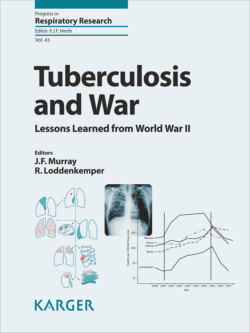Читать книгу Tuberculosis and War - Группа авторов - Страница 29
На сайте Литреса книга снята с продажи.
Since WWII
ОглавлениеUnfortunately, the end of WWII did not end the ongoing warfare: at last count since then, “there have been some 250 major wars” [90]. Estimates of casualties vary considerably, from 23 million to over 50 million, including both military and civilian, with more of the latter than the former plus an increasing percentage of children compared with soldiers. America is still engaged in its longest war ever – in Afghanistan – 16 years and not over yet.
Consider the period from 2011 until 2016, it appears as though the world might be beginning to pacify: wars no longer occur in over half the earth: North and South America, Europe, and Australia (Antarctica does not count). Nevertheless, civil wars remain plentiful within Asia (Middle East) and Africa, including in Iraq, Syria, Libya, and Sudan. Lesser intranational military insurgencies in Africa have involved Somalia, Mali, and other locations. The only sovereign nations still engaged in recurrent warfare are Pakistan and India (Asia).
This last word comes from the ongoing horrendous war in Syria, which metamorphosed in 2011 from peaceful demonstrations to the formation of separate rebel forces, later supplemented by units from ISIS, illustrates once again how war ignites TB that may rapidly spread to neighboring countries. From 18 March 2011 to 21 January 2015, 78,769 civilian deaths occurred in Syria, of which 77,646 took place under control of non-state armed groups compared with 1,123 in government-controlled regions [91]. Between 2010 and 2014, life expectancy of Syrians decreased 20 years. In some regions 90% of the medical and nursing staff have left; medicines of all sorts and routine medical supplies have vanished. In 2011, the prevalence of TB in Syria was 23/100,000, today in 2017 it has soared to an unknown value. Anti-TB facilities have closed and medications are no longer available. Studies of Syrian refugees in Jordan have shown a nearly 40% greater TB case detection compared with the 2012 Jordanian rate [92]. Moreover, in Lebanon, a 27% increase in TB has been identified in Syrian refugees [93]. Given the increased exposure to TB, additional injured patients, health-care workers, and other uninfected personnel are likely candidates for the disease; few cases of drug resistance are currently known but others are sure to follow.
